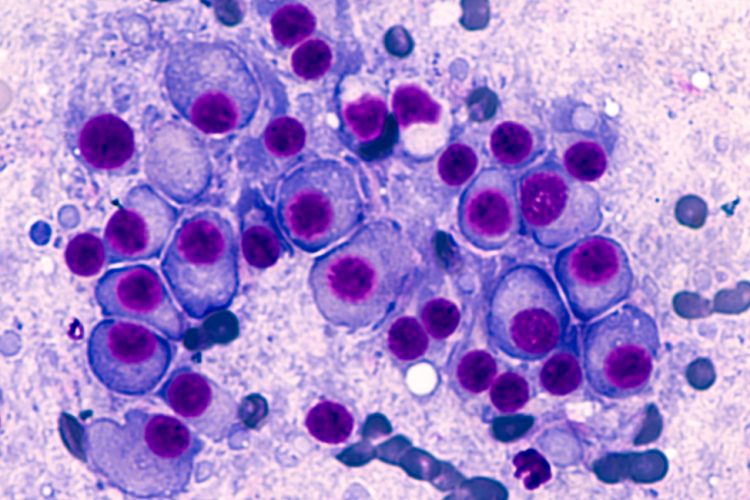New α-radioimmunotherapy shows promise as multiple myeloma treatment in mice
Posted: 7 August 2020 | Victoria Rees (Drug Target Review) | No comments yet
An α-radioimmunotherapy called 212Pb-anti-CD38 was effective at preventing tumour growth and increasing survival in multiple myeloma tumour-bearing mice, a study has shown.


A new α-radioimmunotherapy has proven effective in preventing tumour growth and increasing survival in multiple myeloma tumour-bearing mice, according to new research.
Named 212Pb-anti-CD38, the treatment’s long half-life, central production and worldwide distribution make the therapy not only effective but also clinically feasible as a multiple myeloma treatment, say the researchers from Limoges University Hospital, France.
“Targeted radioimmunotherapy using antibodies against proteins expressed at the cell membrane on tumoural cells has already shown efficacy with beta-emitters, but with severe side effects,” said Dr Isabelle Quelven-Bertin, radiopharmacist at Limoges University Hospital. “Using alpha particles is very attractive because their much shorter path-length reduces unwanted radiation exposure on normal tissues, thereby reducing side effects. As such, we investigated the potential of the α-radioimmunotherapy 212Pb-anti-CD38 in the treatment of multiple myeloma.”
The researchers developed human myeloma cell lines, which were analysed for cell proliferation after incubation with various concentrations of 212Pb monoclonal antibodies (mAbs). Mice received subcutaneous grafts of human myeloma cell lines and were injected with 212Pb-anti-CD38, 212Pb-anti-mCD38 (mice-specific) or 212Pb-isotypic control. Biodistribution, toxicity and dose-range-finding studies were performed, as well as radioimmunotherapy experiments that measured tumour volume and overall survival.
The human myeloma cell line saw a significant inhibition of cell proliferation three days after incubation with 212Pb-anti-CD38. Likewise, the mouse model showed marked inhibition of cell proliferation for mice treated with 212Pb-anti-CD38, with a median survival of 55 days; mice that received the isotypic control had a median survival of 11 days. Biodistribution studies showed a specific tumoural accumulation of 212Pb-anti-CD38 and toxicity experiments with 212Pb-anti-mCD38 established a toxic activity of 277.5kBq.
While 212Pb mAbs effectively inhibited multiple myeloma tumour growth and increased survival, whole-body SPECT/CT imaging was not possible due to the low 212Pb activity injected and the detection sensitivity. Instead, the researchers performed SPECT/CT imaging with 203Pb, a chemically identical radiometal.
“This radioelement allowed us to consider a theranostic approach for 212Pb α-radioimmunotherapy, preventing the need for a radionuclide with different physical-chemical properties that would likely result in different pharmacokinetics. Combining therapy and imaging could provide an effective approach to optimising therapeutic doses using specific dosimetry calculation and to monitoring the patient’s response. Moving forward, this could be considered as an innovative theranostic approach,” said Professor Michel Cogné, at Limoges Medical School.
The results were published in Journal of Nuclear Medicine.
Related topics
Drug Development, Drug Targets, Immuno-oncology, Immunotherapy, Oncology, Research & Development, Therapeutics
Related conditions
multiple myeloma
Related organisations
Limoges University Hospital
Related people
Dr Isabelle Quelven-Bertin, Professor Michel Cogné








